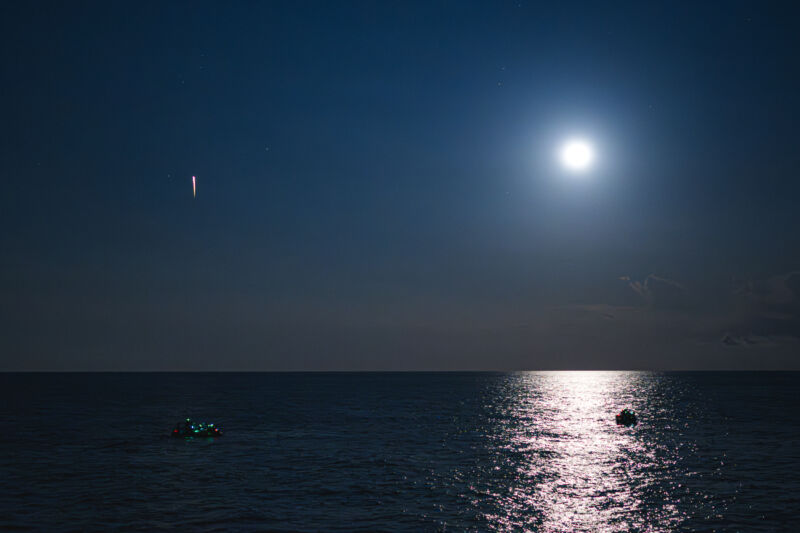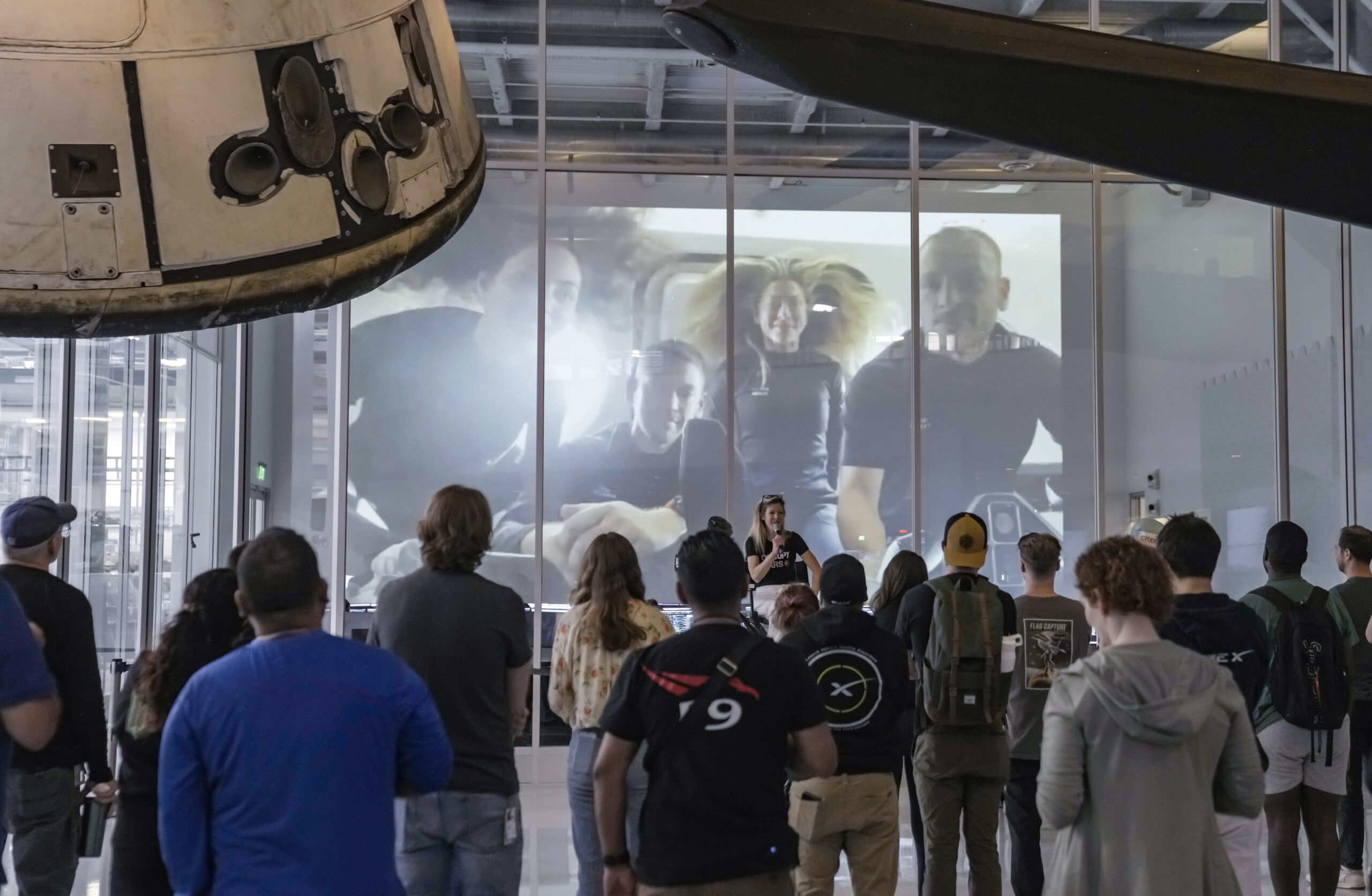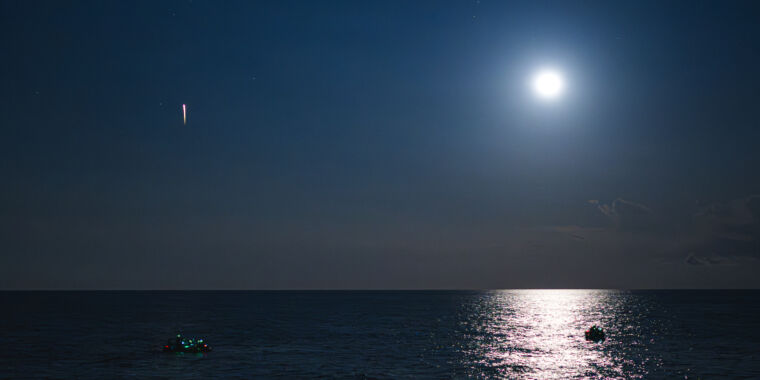
SpaceX
A white spaceship, toasted like a marshmallow and smelling of burnt metal, fell from the night sky early Sunday morning and landed in the Gulf of Mexico, not far from Key West.
The dark waters there were carefully chosen from dozens of potential landing sites near Florida. That's because the wind and sea conditions were forecast to be particularly calm and serene, as the Crew Dragon spacecraft is named Resistance drifted out to sea and bobbed gently back and forth, waiting for a salvage ship to arrive.
Inside, a crew of four waited: commander Jared Isaacman, a billionaire who funded the mission and had just completed his second private spaceflight; SpaceX engineers Sarah Gillis and Anna Menon, the company's first employees to fly into orbit; and pilot Kidd Poteet.
They were happy to be home.
“Our mission is complete,” Isaacman said after the spacecraft landed.
A great success
Their mission, certainly the most ambitious private spaceflight to date, was a great success. The mission, dubbed “Polaris Dawn,” reached an altitude of 1,408.1 km on the first day of its flight. It was the highest mission ever flown in orbit around Earth, and the furthest distance humans have flown from our planet since the Apollo missions more than half a century ago.
On the third day of the flight, the four-member crew donned spacesuits designed and developed over the past two years. After pumping the cabin atmosphere into space, Isaacman and then Gillis spent several minutes stretching their bodies out of the Dragon spacecraft. This was the first private spacewalk in history.
Although this space flight was largely a repeat of what the Soviet Union and later the United States had done in the mid-1960s with tethered spacewalks, it was significant nonetheless. These commercial spacesuits cost a fraction of the government suits and can be considered version 1.0 of the suits that would one day allow many people to walk in space, on the moon and eventually on Mars.

The crew of Polaris Dawn returns to SpaceX headquarters in Hawthrone, California on Saturday.
SpaceX
Finally, on the mission’s last full day in space on Saturday, the Dragon spacecraft demonstrated connectivity with a network of Starlink satellites in low Earth orbit. The crew held a 40-minute, uninterrupted video call with flight operators at SpaceX’s headquarters in Hawthorne, California. During that time, the company said, Dragon maintained laser contact with Starlink satellites through 16 firings of the spacecraft’s Draco thrusters.
This test demonstrated the feasibility of using the thousands of Starlink satellites in space to provide super-fast internet to people and spacecraft in space.
Wait a minute, isn't this just a billionaire joyride?
Some people misunderstood the mission. They saw Isaacman as a financial tech billionaire satisfying his desire to go into space, in a crew vehicle built by Elon Musk’s rocket company SpaceX. This seemed like just another rollercoaster ride for the ultra-rich and famous—for those who couldn’t satisfy their cravings for sensationalism with the pleasures achievable on planet Earth.
I understand this point of view, but I do not share it.
The reality is that Isaacman and his hand-picked crew, which includes two SpaceX employees who bring their expertise to the design of spacecraft and other vehicles at the company, trained hard for this mission for the better part of two years. Flying such a daring profile to a high altitude, through potential conjunctions with thousands of satellites; and then ventilating their cabin to perform a spacewalk, meant that every crew member was taking huge risks.
For the Crew Dragon missions that fly to and from the International Space Station, NASA has an acceptable “loss-of-crew” probability of 1 in 270. However, on those spaceflights, the crew spends significantly less time on Dragon and flies at a much lower, safer altitude. They do not perform spacewalks from Dragon. The Polaris Dawn crew therefore assumed that there were nontrivial hazards in undertaking this spaceflight. These assumed risks were measured rather than reckless.
So why? Why take such risks? Because the final frontier, after nearly seven decades of space exploration, remains largely unexplored. If humanity is destined to one day expand to other worlds, and ultimately other stars, we will need to do so with more than a few government astronauts making short flights. To open up space, there must be cheaper access and commercial opportunities.
With his inventive and daring Polaris Dawn mission, Isaacman has taken a step toward such a future, pushing Dragon’s performance forward and accelerating SpaceX’s timeline for developing low-cost spacesuits. Isaacman certainly had a good time. But it was for a very good cause. He was lucky enough to be the first to go, but his actions are blazing a trail for many to follow.

